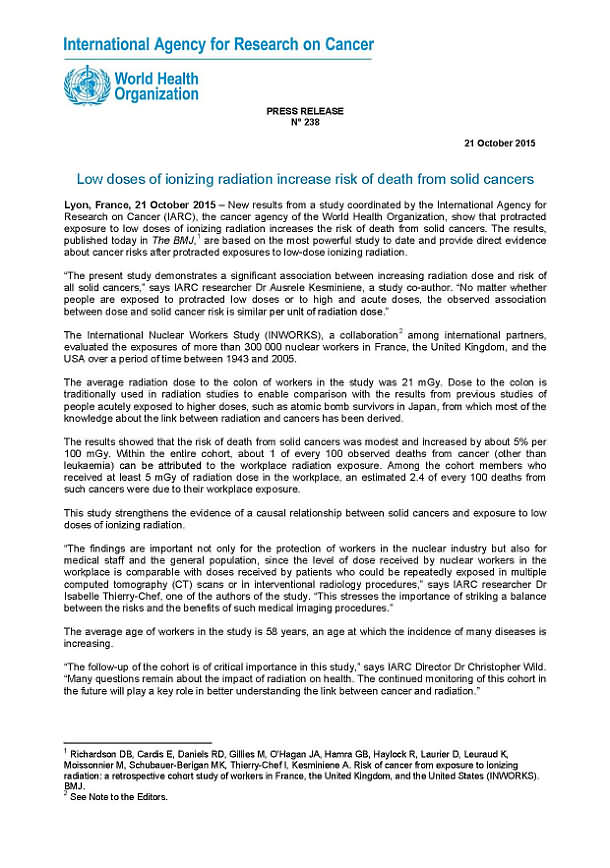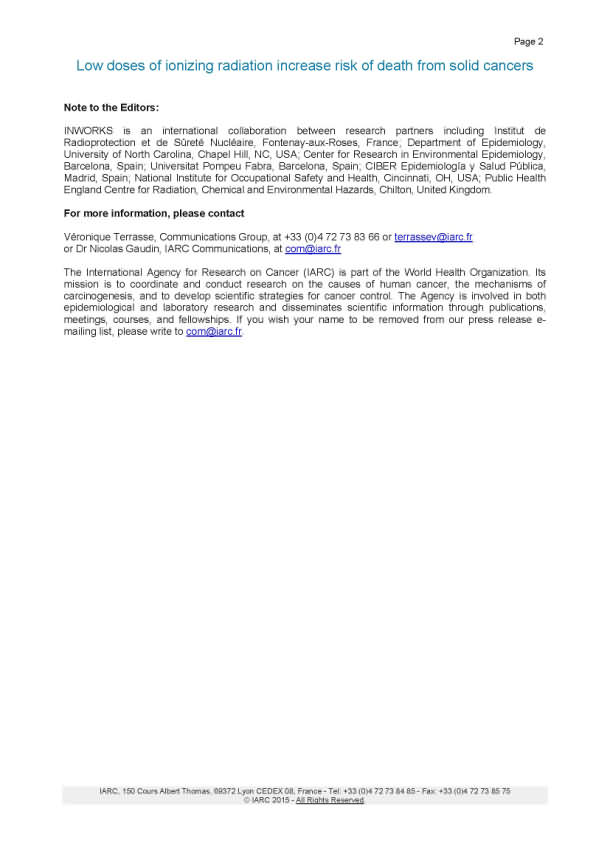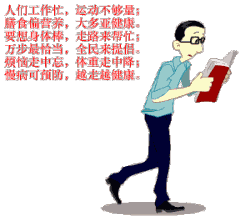Low doses of ionizing radiation increase risk of death from solid cancers
Lyon, France, 21 October 2015 – New results from a study coordinated by the International Agency for Research on Cancer (IARC), the cancer agency of the World Health Organization, show that protracted exposure to low doses of ionizing radiation increases the risk of death from solid cancers. The results, published today in The BMJ,1 are based on the most powerful study to date and provide direct evidence about cancer risks after protracted exposures to low-dose ionizing radiation.
“The present study demonstrates a significant association between increasing radiation dose and risk of all solid cancers,” says IARC researcher Dr Ausrele Kesminiene, a study co-author. “No matter whether people are exposed to protracted low doses or to high and acute doses, the observed association between dose and solid cancer risk is similar per unit of radiation dose.”
The International Nuclear Workers Study (INWORKS), a collaboration2 among international partners, evaluated the exposures of more than 300 000 nuclear workers in France, the United Kingdom, and the USA over a period of time between 1943 and 2005.
The average radiation dose to the colon of workers in the study was 21 mGy. Dose to the colon is traditionally used in radiation studies to enable comparison with the results from previous studies of people acutely exposed to higher doses, such as atomic bomb survivors in Japan, from which most of the knowledge about the link between radiation and cancers has been derived.
The results showed that the risk of death from solid cancers was modest and increased by about 5% per 100 mGy. Within the entire cohort, about 1 of every 100 observed deaths from cancer (other than leukaemia) can be attributed to the workplace radiation exposure. Among the cohort members who received at least 5 mGy of radiation dose in the workplace, an estimated 2.4 of every 100 deaths from such cancers were due to their workplace exposure.
This study strengthens the evidence of a causal relationship between solid cancers and exposure to low doses of ionizing radiation.
“The findings are important not only for the protection of workers in the nuclear industry but also for medical staff and the general population, since the level of dose received by nuclear workers in the workplace is comparable with doses received by patients who could be repeatedly exposed in multiple computed tomography (CT) scans or in interventional radiology procedures,” says IARC researcher Dr Isabelle Thierry-Chef, one of the authors of the study. “This stresses the importance of striking a balance between the risks and the benefits of such medical imaging procedures.”
The average age of workers in the study is 58 years, an age at which the incidence of many diseases is increasing.
“The follow-up of the cohort is of critical importance in this study,” says IARC Director Dr Christopher Wild. “Many questions remain about the impact of radiation on health. The continued monitoring of this cohort in the future will play a key role in better understanding the link between cancer and radiation.”






